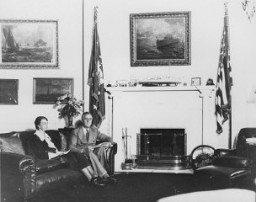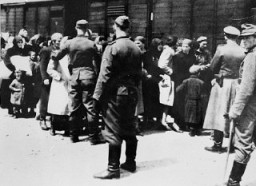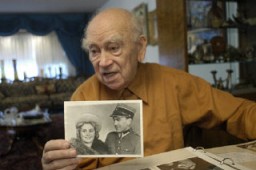You searched for: %E7%BE%8E%E5%A5%B3%E8%82%89%E4%B8%9D%E9%AB%98%E8%B7%9F%E3%80%90%E9%80%89%E7%BE%8E%E5%A5%B3%E2%88%B6578636.com%E3%80%91%E5%85%A8%E7%90%83%E5%B0%91%E5%A6%87%E7%BA%A6PAO%E3%80%91%E6%96%B9%E6%AD%A3%E5%8E%BF%E9%82%A3%E9%87%8C%E6%9C%89%E5%A5%B3%E4%BC%98%E5%85%A8%E5%A5%97%E3%80%91%E6%88%90%E4%BA%BA%E8%8B%B1%E8%AF%AD%E8%BE%85%E5%AF%BC%E6%9C%BA%E6%9E%84%E3%80%90578636.com%E3%80%91%E5%BD%93%E5%9C%B0%E6%A0%A1%E8%8A%B1%E8%8E%9E%E5%BC%8F%E3%80%91%E5%A4%A7%E5%86%B6%E5%B8%82%E5%93%AA%E9%87%8C%E6%9C%89%E5%B0%8F%E5%A6%B9%E8%82%89%E4%BE%BF%E5%99%A8%E3%80%91tfsbjnuf3
<< Previous | Displaying results 101-125 of 241 for "%E7%BE%8E%E5%A5%B3%E8%82%89%E4%B8%9D%E9%AB%98%E8%B7%9F%E3%80%90%E9%80%89%E7%BE%8E%E5%A5%B3%E2%88%B6578636.com%E3%80%91%E5%85%A8%E7%90%83%E5%B0%91%E5%A6%87%E7%BA%A6PAO%E3%80%91%E6%96%B9%E6%AD%A3%E5%8E%BF%E9%82%A3%E9%87%8C%E6%9C%89%E5%A5%B3%E4%BC%98%E5%85%A8%E5%A5%97%E3%80%91%E6%88%90%E4%BA%BA%E8%8B%B1%E8%AF%AD%E8%BE%85%E5%AF%BC%E6%9C%BA%E6%9E%84%E3%80%90578636.com%E3%80%91%E5%BD%93%E5%9C%B0%E6%A0%A1%E8%8A%B1%E8%8E%9E%E5%BC%8F%E3%80%91%E5%A4%A7%E5%86%B6%E5%B8%82%E5%93%AA%E9%87%8C%E6%9C%89%E5%B0%8F%E5%A6%B9%E8%82%89%E4%BE%BF%E5%99%A8%E3%80%91tfsbjnuf3" | Next >>
-
The 69th Infantry Division during World War II
ArticleThe 69th Infantry Division participated in major WWII campaigns and is recognized for liberating the Leipzig-Thekla subcamp of Buchenwald in 1945.
-
Lithuania
ArticleAs part of the Holocaust, the Germans murdered about 90% of Jews in Lithuania. Read more about the tragic experience of Lithuanian Jews during World War II.

-
Buchenwald
ArticleThe Nazi regime established the Buchenwald camp in 1937. Learn about the camp’s prisoners, conditions there, forced labor, subcamps, medical experiments, and liberation.

-
Herzogenbusch Main Camp (Vught)
ArticleThe Herzogenbusch concentration camp in the Netherlands began functioning in January 1943. Learn about its establishment, administration, prisoners, and conditions there.

-
Halle
ArticleHalle an der Saale was a satellite camp of Buchenwald concentration camp. It was established by the Nazis in Saxony, Germany in 1941.
-
Brandenburg T4 Facility
ArticleBrandenburg was one of six killing centers the Nazis established to murder patients with disabilities under the so-called "euthanasia" program.
-
Law on the Head of State of the German Reich
ArticleThe Law on the Head of State of the German Reich was the last step in destroying democracy in interwar Germany and making Adolf Hitler a dictator. Learn more.
-
Nazi Persecution of Jehovah's Witnesses
ArticleJehovah's Witnesses were subjected to intense persecution under the Nazi regime. Read more to learn why and how the Nazi regime targeted them.

-
Theresienstadt
ArticleThe Theresienstadt camp/ghetto served multiple purposes during its existence from 1941-45 and had an important propaganda function for the Germans. Learn more.

-
Aliyah Bet
ArticleLearn more about Aliyah Bet, the clandestine immigration of Jews to Palestine between 1920 and 1948, when Great Britain controlled the area.

-
Persecution of Roma (Gypsies) in Prewar Germany, 1933–1939
ArticleBeginning in 1933, the Nazis persecuted Roma (often pejoratively called “Gypsies”) based on underlying prejudices and racism. Learn how this harassment escalated to genocide.

-
Ban on Jehovah's Witness Organizations
Timeline EventApril 1, 1935. On this date, the German government banned all Jehovah's Witness organizations.

-
Eleanor Roosevelt
ArticleEleanor Roosevelt, longest serving First Lady in US history, used her social and political influence to intervene on behalf of refugees before and during WWII.

-
Columbia-Haus
ArticleThe Columbia-Haus camp was one of the early camps established by the Nazi regime. It held primarily political detainees. Learn more about the history of the camp.
-
Passport stamped with "J" for "Jude"
PhotoPassport issued to Lore Oppenheimer, a German Jew, with "J" for "Jude" stamped on the card. "Sara" was added to the names of all German Jewish women. Hildesheim, Germany, July 3, 1939.

-
Auschwitz Through the Lens of the SS: Frankfurt Trial
ArticleKarl Höcker’s album shows him in close contact to the main perpetrators at Auschwitz-Birkenau. Learn about his 1963 trial and the significance of his album.

-
Air war in Flanders: Western Campaign
FilmThe Junkers (Ju) 87, known as the "Stuka," spearheaded the Blitzkrieg ("lightning war") attacks that were decisive in the western campaign in 1940. Stuka dive-bombers closely supported German forces on the ground. They destroyed enemy strong points, aircraft, and airfields, and spread panic in rear areas. Although slow and easily shot down by Allied fighters, the Stukas proved devastatingly effective in the German invasions of Poland and western Europe, where Germany enjoyed air superiority. Stuka…

-
Georg Grosz
ArticleGeorg Grosz was a German artist of the Dada movement. His books, which had many of his best-known plates, were burned in Nazi Germany in 1933. Learn more.

-
Life After the Holocaust: Norman Salsitz
ArticleAfter WWII and the fall of the Nazi regime, Holocaust survivors faced the daunting task of rebuilding their lives. Listen to Norman Salsitz's story.

-
Gross-Rosen
Media EssayGross-Rosen became an independent concentration camp in 1941. The camp eventually expanded to become the center of an industrial complex and to include a vast network of at least 97 subcamps.
-
Aron Tabrys
ID CardAron was the second of six children born to Jewish parents in Vilna, a city known as a center of Jewish cultural life. He was called Arke by his friends and family. Aron's father supported his large family on the meager income of a chimney sweep. 1933-39: As a child Aron attended a Jewish day school, and then went on to attend a public secondary school. When he was 14 his father had an accident which rendered him blind, and Aron had to start working full-time to support the family. Aron belonged to an…

-
Eva Gredinger
ID CardEva was one of three children born to Jewish parents in Vertujeni, a Bessarabian town that was 90 percent Jewish. Eva attended a public school. Her family was religious, attending synagogue every day. Eva's father made his living as a kosher butcher, preparing chicken according to Jewish dietary laws. 1933-39: In 1936, when Eva was 15 years old, her family moved to Vysoka, where she later got a job as a seamstress. Vysoka was very different from her hometown. There were only about 15 Jewish families in…

-
Janusz Piotrowski
ID CardJanusz was the eldest of four children born to Catholic parents in Plock, a town located in a rural area north of Warsaw. His father was an accountant. Janusz attended local schools, and became active in scouting. 1933-39: Janusz went to Warsaw to study civil engineering. On September 1, 1939, the Germans began bombing Warsaw. One week later, all able-bodied men who had not been mobilized were directed to retreat east. On September 17, Janusz was 90 miles from the Romanian border. That night, the Soviets…

-
Tomasz (Toivi) Blatt
ID CardTomasz was born to a Jewish family in Izbica, a Polish town whose largely religious Jewish community comprised more than 90 percent of the population. Tomasz's father owned a liquor store. 1933-39: In September 1939, a drum sounded in the marketplace, calling the town to assemble for a news report. Germany had invaded Poland. More news arrived shortly; the Soviet Union was invading from the east. Tomasz and his family didn't know what to do. Some people said to run to the Soviet side; many, including his…

-
William Denson describes postwar trials of concentration camp personnel
Oral HistoryWilliam Denson graduated from the US Military Academy at West Point in 1934 and attended Harvard Law School. He returned to West Point to teach law from 1942 until 1945. In January 1945, Denson accepted the position of Judge Advocate General (JAG) in Europe and was assigned to US Third Army headquarters in Germany. He took part in more than 90 trials against Germans who had committed atrocities against downed American pilots. In August 1945, Denson became chief prosecutor for the US government at the…

